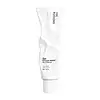What's inside
What's inside
 Key Ingredients
Key Ingredients

 Benefits
Benefits

 Concerns
Concerns

No concerns
 Ingredients Side-by-side
Ingredients Side-by-side

Rice Ferment Filtrate
Skin ConditioningButylene Glycol
HumectantCaprylic/Capric Triglyceride
Masking1,2-Hexanediol
Skin ConditioningSqualane
EmollientCetearyl Alcohol
EmollientCetearyl Olivate
Sorbitan Olivate
EmulsifyingStreptococcus Thermophilus Ferment
HumectantTocopherol
AntioxidantAmmonium Acryloyldimethyltaurate/Vp Copolymer
Hydroxyethyl Acrylate/Sodium Acryloyldimethyl Taurate Copolymer
Emulsion StabilisingEthylhexylglycerin
Skin ConditioningWater
Skin ConditioningSorbitan Isostearate
EmulsifyingBifida Ferment Lysate
Skin ConditioningGlycerin
HumectantMadecassoside
AntioxidantCeramide NP
Skin ConditioningLactobacillus Ferment Lysate
Skin ConditioningRice Ferment Filtrate, Butylene Glycol, Caprylic/Capric Triglyceride, 1,2-Hexanediol, Squalane, Cetearyl Alcohol, Cetearyl Olivate, Sorbitan Olivate, Streptococcus Thermophilus Ferment, Tocopherol, Ammonium Acryloyldimethyltaurate/Vp Copolymer, Hydroxyethyl Acrylate/Sodium Acryloyldimethyl Taurate Copolymer, Ethylhexylglycerin, Water, Sorbitan Isostearate, Bifida Ferment Lysate, Glycerin, Madecassoside, Ceramide NP, Lactobacillus Ferment Lysate
Water
Skin ConditioningMethylpropanediol
SolventPropylheptyl Caprylate
Emollient1,2-Hexanediol
Skin ConditioningPolyglyceryl-6 Distearate
EmulsifyingLaminaria Japonica Extract
Skin ProtectingEclipta Prostrata Leaf Extract
Skin ConditioningCentella Asiatica Extract
CleansingFicus Carica Fruit Extract
HumectantAcmella Oleracea Extract
Skin ProtectingHydrogenated Lecithin
EmulsifyingAmmonium Acryloyldimethyltaurate/Vp Copolymer
Jojoba Esters
EmollientXanthan Gum
EmulsifyingCetyl Alcohol
EmollientPolyglyceryl-3 Beeswax
EmulsifyingFructooligosaccharides
HumectantBeta-Glucan
Skin ConditioningButylene Glycol
HumectantPanthenol
Skin ConditioningHydrolyzed Hyaluronic Acid
HumectantRaffinose
Skin ConditioningFolic Acid
Skin ConditioningCeramide NP
Skin ConditioningCholesterol
EmollientTromethamine
BufferingPalmitoyl Pentapeptide-4
Skin ConditioningEthylhexylglycerin
Skin ConditioningWater, Methylpropanediol, Propylheptyl Caprylate, 1,2-Hexanediol, Polyglyceryl-6 Distearate, Laminaria Japonica Extract, Eclipta Prostrata Leaf Extract, Centella Asiatica Extract, Ficus Carica Fruit Extract, Acmella Oleracea Extract, Hydrogenated Lecithin, Ammonium Acryloyldimethyltaurate/Vp Copolymer, Jojoba Esters, Xanthan Gum, Cetyl Alcohol, Polyglyceryl-3 Beeswax, Fructooligosaccharides, Beta-Glucan, Butylene Glycol, Panthenol, Hydrolyzed Hyaluronic Acid, Raffinose, Folic Acid, Ceramide NP, Cholesterol, Tromethamine, Palmitoyl Pentapeptide-4, Ethylhexylglycerin
Ingredients Explained
These ingredients are found in both products.
Ingredients higher up in an ingredient list are typically present in a larger amount.
1,2-Hexanediol is a synthetic liquid and another multi-functional powerhouse.
It is a:
- Humectant, drawing moisture into the skin
- Emollient, helping to soften skin
- Solvent, dispersing and stabilizing formulas
- Preservative booster, enhancing the antimicrobial activity of other preservatives
Ammonium Acryloyldimethyltaurate/Vp Copolymer (let's call it AAVC for short) is a synthetically created polymer. It's used as a film-forming agent and used to thicken the consistency of products.
AAVC is able to increase the consistency and viscosity of products due to its large molecule size. It also prevents ingredients from separating.
Butylene Glycol (or BG) is used within cosmetic products for a few different reasons:
Overall, Butylene Glycol is a safe and well-rounded ingredient that works well with other ingredients.
Though this ingredient works well with most skin types, some people with sensitive skin may experience a reaction such as allergic rashes, closed comedones, or itchiness.
Learn more about Butylene GlycolCeramide NP is a type of ceramide and formally known as ceramide 3.
Ceramides are intercellular lipids naturally found in our skin that bonds dead skin cells together to create a barrier. They are known for their ability to hold water and thus are a great ingredient for dry skin.
Ceramides are an important building block for our skin barrier. A stronger barrier helps the skin look more firm and hydrated. By bolstering the skin ceramides act as a barrier against irritating ingredients. This can help with inflammation as well.
If you would like to eat ceramides, sweet potatoes contain a small amount.
Read more about other common types of ceramides here:
Ceramide AP
Ceramide EOP
Ethylhexylglycerin (we can't pronounce this either) is commonly used as a preservative and skin softener. It is derived from glyceryl.
You might see Ethylhexylglycerin often paired with other preservatives such as phenoxyethanol. Ethylhexylglycerin has been found to increase the effectiveness of these other preservatives.
Water. It's the most common cosmetic ingredient of all. You'll usually see it at the top of ingredient lists, meaning that it makes up the largest part of the product.
So why is it so popular? Water most often acts as a solvent - this means that it helps dissolve other ingredients into the formulation.
You'll also recognize water as that liquid we all need to stay alive. If you see this, drink a glass of water. Stay hydrated!
Learn more about Water